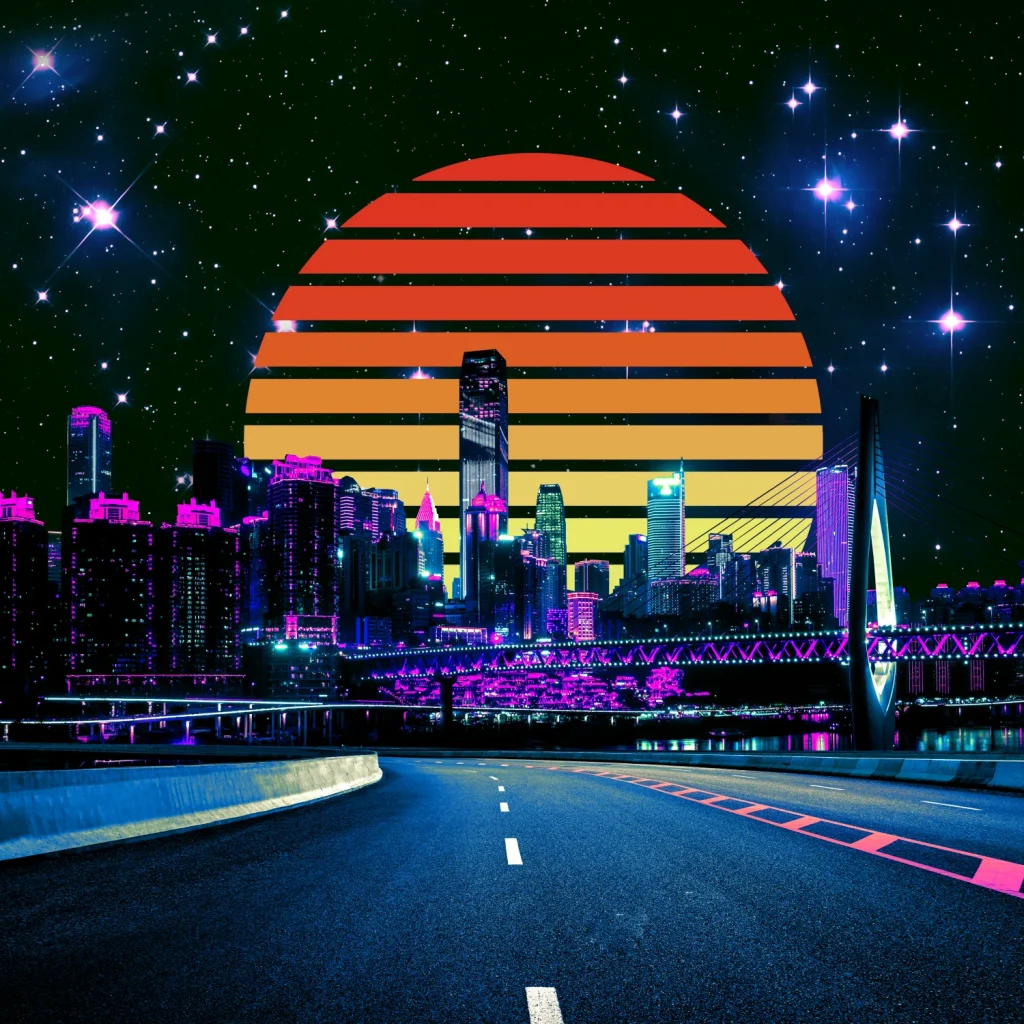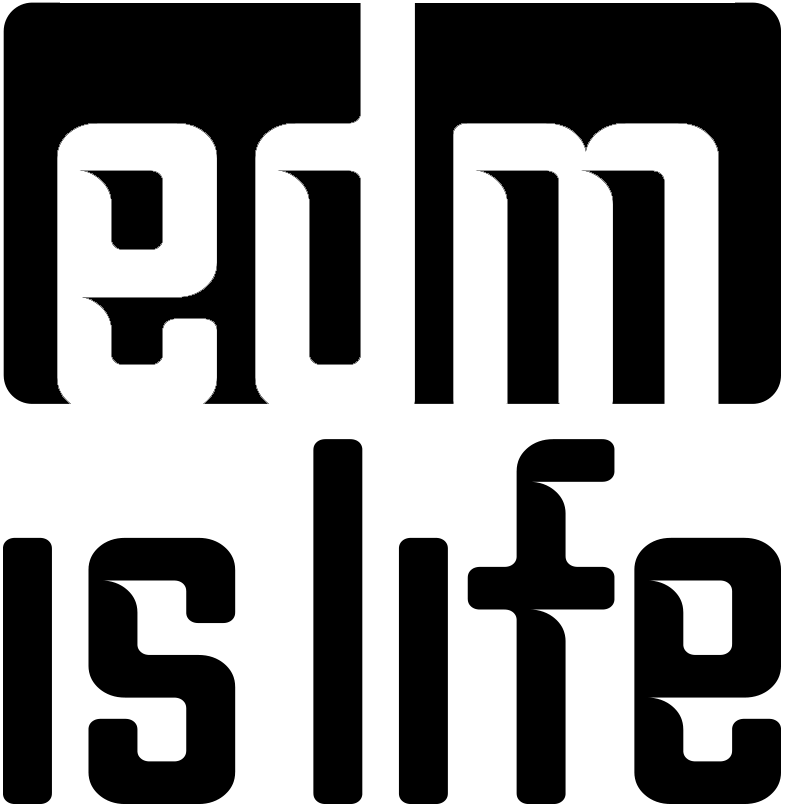
“Synthwave isn’t just music—it’s memory turned into motion.”
—Gunship, in an interview with NewRetroWave
Beneath the surface of today’s algorithm-driven musical chaos, there lives a world that glows with the flicker of CRT screens, vibrates with analogue synths, and glides through endless neon-lit cityscapes at 88 miles per hour. This isn’t a genre; it’s an ecosystem, a complete aesthetic and emotional experience. Welcome to Synthwave.
More than just a throwback, Synthwave is a movement. It’s where the disenchanted children of Gen X and older Millennials have found refuge in a digital daydream, one lovingly shaped by the VHS fuzz of Blade Runner, the saxophone solos of The Lost Boys, the outrun speed of Knight Rider, and the lo-fi future shock of John Carpenter soundtracks. It’s the ultimate love letter to a time when the future still looked exciting, dangerous, and weirdly hopeful.
Born in bedrooms, coded in DAWs, and shared through Bandcamp, YouTube, and Twitch streams, Synthwave has become the underground music scene that won’t die, because it never really lived in the mainstream to begin with. It’s niche, yes. But it’s global, connected, and unapologetically obsessed with the aesthetic and ideals of a retro-futurist world. From Tokyo to Toronto, Berlin to Birmingham, the sound is growing louder, and nowhere is that more visible than in the UK.
“We don’t just write music. We build worlds.” —Dan Haigh, Gunship
No conversation about Synthwave can begin without acknowledging Vangelis. His 1982 score for Blade Runner is the spiritual Genesis of the genre, a shimmering, dystopian dreamscape where synthesisers pulse with melancholy and mystery. It was more than a soundtrack; it was a vision of the future, a blueprint for sonic worldbuilding.
The DNA of Synthwave is deeply cinematic. Jan Hammer’s work on Miami Vice married style and synths with glossy drama, helping to solidify the soundtrack as a character in its own right. Tangerine Dream created textural sonic landscapes in films like Thief, Risky Business, and Firestarter, a sound that continues to echo in the ambient corners of Synthwave today. The minimalistic dread of John Carpenter’s scores, particularly Halloween and Escape from New York, has heavily influenced the genre’s darker edges. Giorgio Moroder’s transition from disco into electronic soundtrack work, especially his iconic contributions to Scarface, demonstrated how the sleek power of synths could elevate narrative into operatic, emotional territory.
[embedded content]
These soundtracks were more than accompaniment; they were emotional guides, mood pieces, and aesthetic templates. Synthwave artists didn’t merely sample this legacy; they expanded it, turning film scores into a full-fledged genre, an imagined future built from the sonic ruins of an imagined past.
At the forefront of the UK’s Synthwave movement is Gunship, a London-based trio comprised of Dan Haigh, Alex Westaway, and Alex Gingell. Since emerging in 2015, Gunship has become the gold standard for cinematic Synthwave. Their debut was a cult hit, soaked in analogue warmth and drenched in 1980s atmosphere, but it was 2018’s Dark All Day that confirmed their place in the Synthwave pantheon.
The title track, featuring the legendary Tim Cappello (the shirtless saxophone player immortalised in The Lost Boys) and actor Charlie Simpson of Stranger Things, is a brooding, anthemic masterpiece. The animated music video plays like an ultraviolent love letter to vampire horror, fusing the hyperkinetic styling of Akira with the grim playfulness of Castlevania. Gunship doesn’t merely reference pop culture; they inhabit it. Each release is presented like a chapter in a sci-fi anthology, each video meticulously crafted as a digital short film.
The track Tech Noir features narration from horror master John Carpenter himself and overlays themes of romance, loss, and nostalgia atop a swirling canvas of retro-futurist visual motifs. In another standout, Woken Furies, the band explores digital mortality and identity in a world inspired by Altered Carbon and cyberpunk literature.
[embedded content]
Their most recent album, Unicorn, pushes these themes further into a world of AI, transhumanism, and apocalyptic yearning. It is not only a concept album, it’s a statement about the convergence of humanity and machine. Through all of this, Gunship remains committed to building worlds, not just tracks, combining music with lore, visual art, and cinematic storytelling.
Synthwave is inseparable from its aesthetic identity. The music exists in tandem with a distinct visual language that includes chrome typography, grid-based landscapes, flickering VHS artefacts, magenta sunsets, polygonal palm trees, and the retro-futuristic glow of neon cityscapes. The genre is often described as visual music, an audible painting of 1980s futurism filtered through the lens of the digital age.
The influence of 1980s anime like Bubblegum Crisis and Akira is deeply embedded in Synthwave visuals. The cyber-noir tone of films like Robocop, Escape from L.A., and the original Terminator are consistent reference points. In more recent years, games like Far Cry: Blood Dragon, Hotline Miami, and Cyberpunk 2077 have embraced Synthwave’s sonic and aesthetic tropes, creating a feedback loop between gaming, film, and music.
Artists such as Perturbator lean toward a dystopian interpretation of Synthwave, with aggressive, industrial undertones and horror-laced visuals. The Midnight explores emotional terrain with lyrical narratives and nostalgic instrumentation, blending pop songwriting with wistful synth melodies. FM-84 crafts cinematic road-trip anthems, often fusing live instrumentation with synth pads that could soundtrack any lost John Hughes movie. NINA offers a shimmering vocal presence that bridges Synthwave and dream pop, while LeBrock combines arena rock energy with retro synth textures. Together, these artists form the vanguard of a scene as diverse in tone as it is unified in intent.
[embedded content]
While mainstream charts may overlook Synthwave, its fanbase is one of the most passionate and self-sustaining in contemporary music culture. It exists primarily online, in pockets of deeply interconnected fandom. Reddit threads dissect Gunship’s video lore and album easter eggs with forensic detail. Discord communities host live listening parties, share synth presets, and trade retro-futurist artwork. Twitch DJs stream live outrun sets that pair seamlessly with fan-made animations, arcade-style visual overlays, and original artwork.
This community spans generations. Older fans are drawn by the aesthetics and references they grew up with, cassette tapes, VHS collections, ‘80s arcade cabinets, while younger fans are pulled in by the immersive quality of the sound and the freedom it offers as an alternative to mainstream EDM. The genre encourages DIY creativity: bedroom producers with no label affiliation can share a track, design their own cover art, press it to cassette or neon vinyl, and cultivate an audience within days.
Live events, though rare, are pilgrimage-like in nature. Retro Future Fest and Outland Live, both UK-based, offer immersive experiences where fans come not only to hear the music but to become part of it. Attendees often arrive in full costume, blurring the line between fandom and performance. The events blend elements of club night, synth concert, digital art exhibition, and cosplay convention.
“We grew up watching films that told us the future would be amazing. Synthwave is us refusing to let go of that dream.” —Fan quote from Retro Future Fest, London
Although Synthwave is a global movement, the UK has become one of its most fertile creative hubs. Gunship’s emergence put British Synthwave on the global map, but a growing wave of UK artists, labels, and visual designers continues to elevate the genre.
Outland Recordings and TimeSlave Recordings are central to the UK’s Synthwave infrastructure, operating as both record labels and event organisers. They curate compilations, press bespoke vinyl releases, and support emerging acts with a focus on storytelling and high-end visual branding. Independent visual designers and animators across the UK collaborate directly with artists to craft unique video content, limited edition artworks, and even Synthwave-inspired comic books.
The scene also intersects with fashion, digital art, and interactive storytelling. Collaborations between UK-based game developers, fashion houses, and music producers are birthing immersive worlds that blur reality, gameplay, and sound design. As Synthwave continues to evolve, the UK remains a driving force behind its cultural and creative expansion.
Synthwave is a contradiction. It is a futuristic genre that lives in the past. It is an analogue dream reimagined in digital code. It thrives underground yet pulses with cinematic ambition. And through artists like Gunship and the passionate global community that surrounds them, it offers an antidote to the hyper-saturated, screen-scrolling reality of modern music culture.
In an age of instant gratification, Synthwave dares to be patient, atmospheric, and cinematic. It asks us to slow down, rewind the tape, and reimagine the future, not as it is, but as we hoped it would be.
Because, for all our technological advances, the future never sounded quite as good as it did in 1986.
Related
Discover more from Decoded Magazine
Subscribe to get the latest posts sent to your email.





